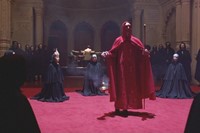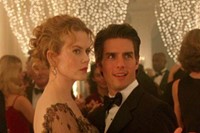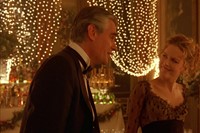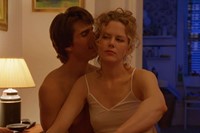Released 20 years ago this month, the filming and release of Stanley Kubrick’s cult film Eyes Wide Shut has long been surrounded by rumours. Here, we uncover the truth behind the myths
Stanley Kubrick’s final film Eyes Wide Shut made its debut on July 16, 1999, four months after the director’s death. The script had been adapted from Arthur Schnitzler’s 1926 novella Traumnovelle (Dream Story), a book that Kubrick had wanted to turn into a film for many years, having bought the rights to the story in the 1960s (the director was purportedly interested in the book’s concern with the difference between fantasy and reality). Eyes Wide Shut is set in 1990s New York, and delves into the fantasies and realities of a married couple, Bill and Alice Harford – played by Tom Cruise and Nicole Kidman, who were also married at the time – whose relationship begins to flounder when Alice confesses a former fantasy about leaving her husband for someone else, and Bill subsequently embarks on a dangerous journey through the city’s secret sexual underworld.
Problems of separating fact from fiction would also become acute in the media coverage of the film, after a lengthy shoot (the longest in history, numbering 400 days) further complicated by Kubrick’s unexpected death days after presenting a final cut to Warner Bros. The film would be the subject of rumours at every stage of its mysterious shoot, during which a number of stories circulated about the movie’s explicit content and how it was being made; after Kubrick’s death, there would also be speculation around his attitude to the final film. These enduring mysteries have helped make it into a cult film – though not all of the questions surrounding the film remain unresolved. Here, we examine five of the most notable myths about Eyes Wide Shut and debunk some longstanding rumours.
1. Myth: Harvey Keitel left the film due to scheduling conflicts
Harvey Keitel was originally cast in the film as a friend of Tom Cruise’s character; however, midway through the shoot, it was announced that his role had been recast, with Sydney Pollack taking over as the wealthy and mysterious Victor Ziegler. The official story was that Kubrick needed to reshoot some scenes and Keitel was unavailable due to other filming commitments, so the director decided to recast the role and shoot all the character’s scenes afresh.
Truth: Keitel’s departure was not due to scheduling conflicts, but actually the result of personal conflicts with Kubrick himself. The actor and the director fell out during filming, and Kubrick ended up removing him from the project altogether. In a 2016 television interview with Andrew Marr, Keitel admitted that Kubrick had fired him, and felt that he had been treated disrespectfully by the director on set.
2. Myth: Tom Cruise and Nicole Kidman were on set for each other’s intimate scenes
At the time the film was made, Cruise and Kidman were still a couple in real life (the pair would go through a highly publicised divorce in 2001). There was a great deal of buzz around what their onscreen representation of married life would be like, and if their status would lead to any tensions on set, due to the film’s sexual subject matter. It was rumoured that each insisted on being present for any intimate scenes the other was required to film with additional cast members.
Truth: The opposite was actually the case. Kubrick did not allow this, and actually discouraged them spending time together on set in general, often directing them separately. A scene portraying a fantasy Kidman’s character has about spending the night with a naval officer was filmed on a closed set, and Cruise was not present at the time.
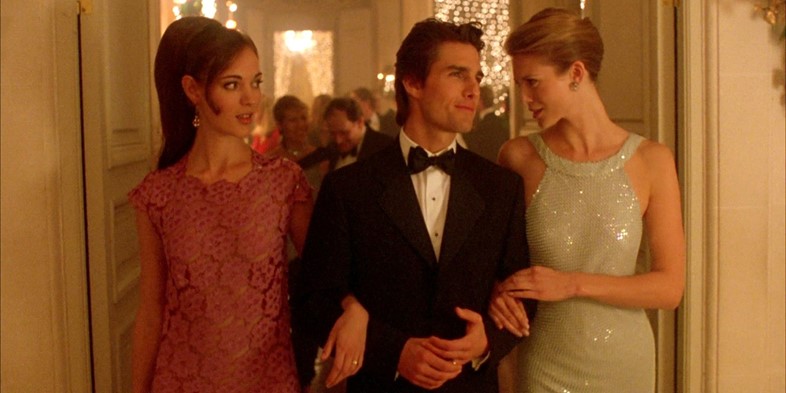
3. Myth: Kubrick considered scrapping the entire film
In January 1999, rumours began to circulate within some film industry circles in Los Angeles that Kubrick was thinking about destroying the film altogether, despite having completed the long shoot and being in the middle of post-production.
Truth: Kubrick never considered doing this, and would probably not have been allowed to do so by the studio in any case. At this point he was actually in the middle of assembling a rough cut of the film, which he would deliver to the studio shortly before he died.
4. Myth: The film released in cinemas was approved by Kubrick
Kubrick finally sent his rough cut to Warner Bros in early March 1999, who held a private screening in New York for studio executives. The rough cut was also made available for Cruise and Kidman to view. This was interpreted by some as a sign that the director had completed the film in its entirety before his untimely passing a few days later.
Truth: While Kubrick had delivered a first cut, this version was not identical to the one that would be released in cinemas four months later. In addition to some aspects including the soundtrack being unfinished, the question of how the film would present its explicit sexual scenes without being given an NC-17 rating in the US was still unresolved. After the director’s death, the studio made the decision to obscure some of the more explicit shots, including those in the orgy scenes, in order to get a less restrictive R rating. While Kubrick had agreed in his contract to make sure the film was rated R, it remains unknown as to whether he would have endorsed the specific choices made by the studio in order to get the rating. Known for his tenacious attention to detail and perfectionism, it is also likely that Kubrick would have continued to make other modifications to the final film in the lead up to its release, as had been the case on earlier projects.

5. Myth: Kubrick hated the final film
In 2006, the actor R. Lee Ermey, who had appeared in Kubrick’s 1987 film Full Metal Jacket, gave an interview in which he alleged that Kubrick had criticised Eyes Wide Shut very strongly after filming was completed. According to Ermey, he and Kubrick were close, and during a phone conversation a couple of weeks before his death, the actor claimed the director had told him Eyes Wide Shut was terrible and that he was “disgusted with it”.
Truth: Ermey’s account has been disputed by those close to Kubrick, including his daughter Katharina, his brother-in-law and producer Jan Harlan, and his friend and fellow director Todd Field, who also had a role in Eyes Wide Shut. Katharina urged people not to believe Ermey’s claims, while Harlan said Kubrick regarded Eyes Wide Shut as his greatest contribution to cinema. Field also disputed the claim that Kubrick and Ermey were close, and claimed that Kubrick had actually warned Field against casting Ermey in another film.
Stanley Kubrick: The Exhibition is at the Design Museum, London, until September 15, 2019.

